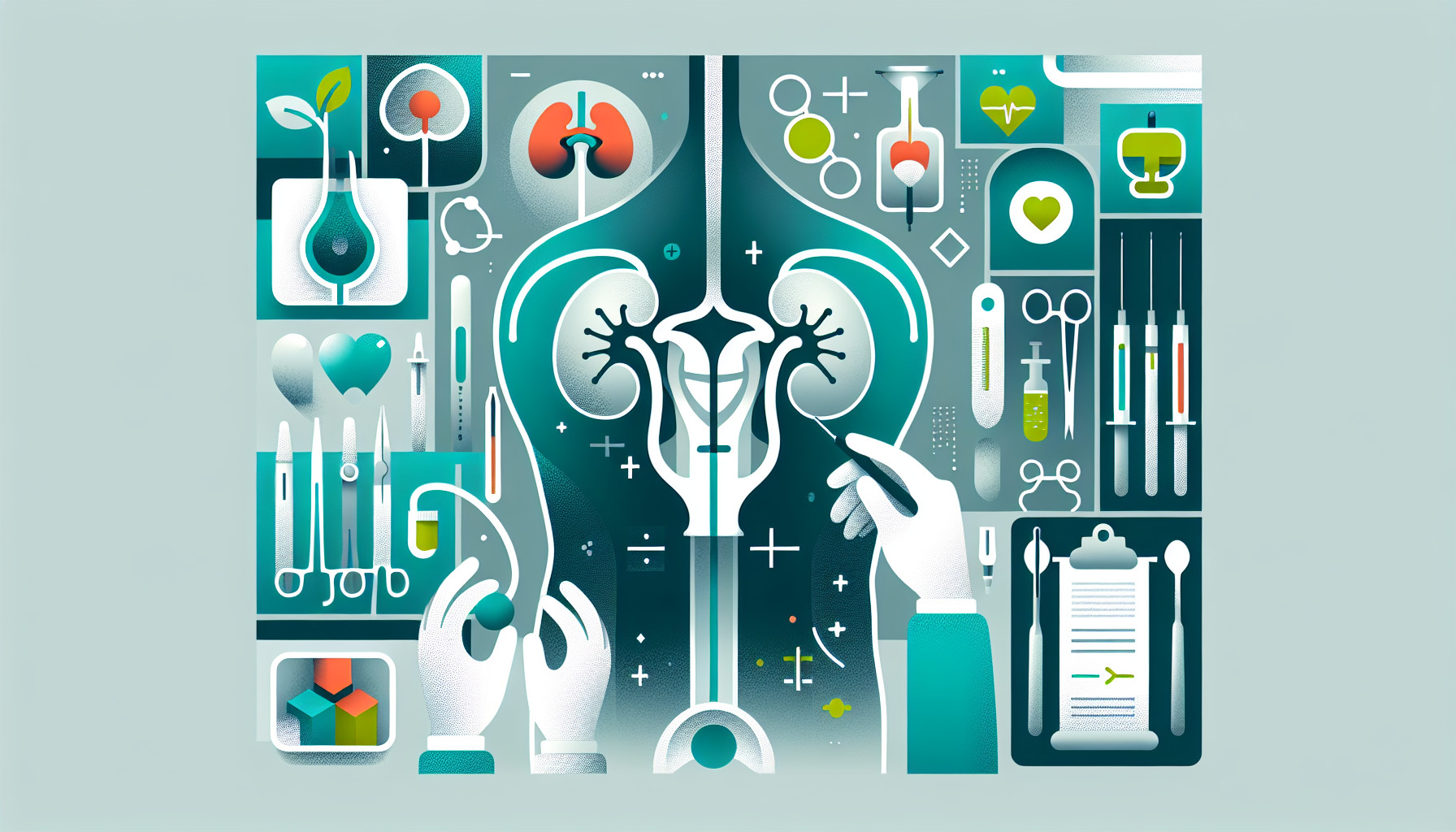Our Summary
This study looked at a rarely used method of redirecting urine flow after the removal of the bladder due to muscle-invasive bladder cancer. This method, called uretero-ureterostomy combined with unilateral nephrostomy, was evaluated for its effectiveness and safety.
The study involved patients who had advanced bladder cancer and were in poor health. To see how their kidneys were functioning, doctors regularly checked the levels of a waste product called creatinine in the patients’ blood, and also estimated the rate at which their kidneys were filtering blood. They kept track of any complications during and after surgery, using various tests and scans. They followed the patients for a year.
The study included 36 patients, who were on average about 77 years old. Most of the patients had other serious health conditions. Some patients had a slight worsening of kidney function, but it wasn’t a significant change. About a third of the patients developed a permanent widening of the pelvic area on one side. Some patients developed serious infections or leaks where the urinary tract was sewn together, but these were all treated successfully without needing another major surgery.
The researchers concluded that this method of rerouting urine flow after bladder removal is safe and effective. While complications did occur, they were manageable.
FAQs
- What is uretero-ureterostomy combined with unilateral nephrostomy?
- How was the effectiveness and safety of the uretero-ureterostomy method evaluated in the study?
- What were the main findings of the study regarding the uretero-ureterostomy method for rerouting urine flow after bladder removal?
Doctor’s Tip
One helpful tip a doctor might tell a patient with a ureterostomy is to monitor their kidney function regularly through blood tests and to report any changes in urine output or color to their healthcare provider. It’s important to stay hydrated and follow any dietary recommendations provided by the healthcare team to support kidney function and overall health. Additionally, proper care of the stoma site is essential to prevent infection and irritation. Regular follow-up appointments with the healthcare team are important to monitor for any potential complications and adjust the treatment plan as needed.
Suitable For
Patients who are typically recommended ureterostomy are those with advanced bladder cancer who are in poor health and unable to undergo other types of urinary diversion surgeries. These patients may have other serious health conditions that make them high-risk candidates for more complex procedures. Ureterostomy may also be recommended for patients who have previously undergone unsuccessful urinary diversion surgeries.
Timeline
Before the ureterostomy procedure, the patient likely undergoes diagnostic tests to confirm the need for bladder removal due to muscle-invasive bladder cancer. This may include imaging tests, blood tests, and possibly a biopsy. The patient would also have discussions with their healthcare team about the procedure, its risks and benefits, and what to expect during recovery.
During the ureterostomy procedure, the surgeon creates a new pathway for urine to leave the body by connecting the ureters to an opening in the abdominal wall, called a stoma. This allows urine to bypass the bladder and be collected in a pouch attached to the skin. The patient would typically stay in the hospital for a few days after the surgery for monitoring and pain management.
After the ureterostomy procedure, the patient would need to adjust to life with a stoma and learn how to care for it properly. This may involve working with a specialized nurse or ostomy care team to learn how to change the pouch, prevent skin irritation, and manage any complications that may arise.
Over time, the patient would likely have follow-up appointments with their healthcare team to monitor their kidney function, check for any signs of infection or other complications, and address any concerns or questions they may have. With proper care and monitoring, most patients can lead a relatively normal and active life after a ureterostomy procedure.
What to Ask Your Doctor
Some questions a patient should ask their doctor about ureterostomy may include:
- What is ureterostomy and why is it being recommended for me?
- What are the potential risks and complications associated with ureterostomy?
- How will my kidney function be monitored after the procedure?
- What can I expect in terms of recovery time and post-operative care?
- Will I need any additional treatments or follow-up care after the procedure?
- How will ureterostomy affect my daily activities and quality of life?
- Are there any lifestyle changes I should make to support my kidney health after the procedure?
- What are the success rates of ureterostomy in patients with similar health conditions as mine?
- Are there any alternative treatment options available for me to consider?
- How can I best prepare myself physically and emotionally for undergoing ureterostomy surgery?
Reference
Authors: Papadimitriou C, Deliveliotis C, Dellis A, Martin W, Mitsogiannis I. Journal: Cureus. 2022 Jul 31;14(7):e27501. doi: 10.7759/cureus.27501. eCollection 2022 Jul. PMID: 36060347
